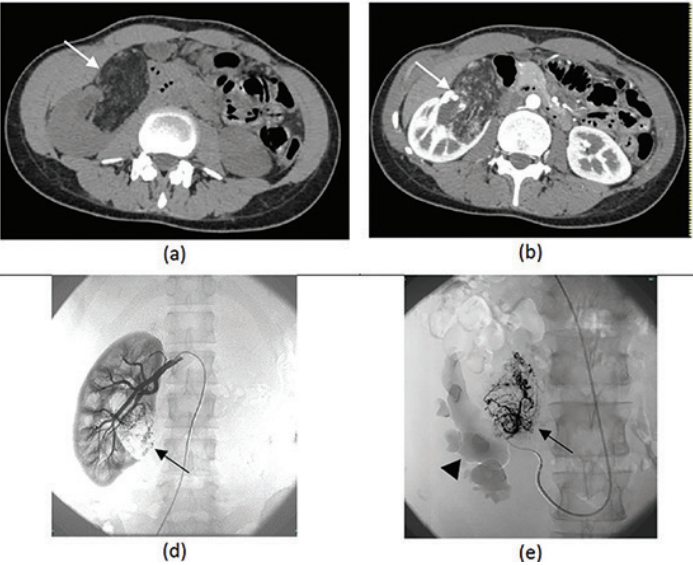Selective Arterial Embolization of Renal Angiomyolipoma: Efficacy, Tumor Volume Reduction and Complications
DOI:
https://doi.org/10.33192/Smj.2021.44Keywords:
Renal angiomyolipoma, selective arterial embolizationAbstract
Objective: To evaluate the efficacy and complications of selective arterial embolization in renal angiomyolipoma and to identify predictive factors for tumor rupture.
Materials and Methods: Overall, 21 patients with 25 renal angiomyolipoma (AML) underwent selective arterial embolization (SAE) between January 2008 and June 2019, comprising 15 cases involving prophylaxis embolization of a tumor >4 cm diameter and 10 involving embolization for a ruptured tumor. Multidetector computed tomography (MDCT) was performed pre- and post-SAE, using the 2D tumor diameter in the ruptured AMLs. Three-dimensional volumetry and density histogram were performed for determining the total tumor volume, fat, and angiomyogenic component reduction in the unruptured AMLs. The predictive factors for tumor rupture, the treatment outcome and complications were analyzed.
Results: The clinical success rate was 84% (21/25 cases) and the technical success rate was 96% (24/25 cases). The 3D volume post-SAE within 1-3 months showed a greater decrement of the enhanced angiomyogenic component than the fat component, with median percentages of -62.2% and -18.4%, respectively (p-value = 0.333). Minor complications were post-embolization syndrome (5 case, 20%) and minimal renal infarction (4 cases, 16%). Renal abscesses were the major complications (3 cases, 12%). A factor associated with tumor rupture was the presence of an intra-tumoral aneurysm (p-value < 0.05).
Conclusion: SAE is an effective treatment for renal AML with a high technical and clinical success rate and limited complications. Three-dimensional volume measurement and density histogram analysis might be better tools than two-dimensional CT to evaluate post-SAE response, which is crucial for management planning.

Published
How to Cite
Issue
Section
License
Copyright (c) 2021 Siriraj Medical Journal

This work is licensed under a Creative Commons Attribution-NonCommercial-NoDerivatives 4.0 International License.
Authors who publish with this journal agree to the following conditions:
Copyright Transfer
In submitting a manuscript, the authors acknowledge that the work will become the copyrighted property of Siriraj Medical Journal upon publication.
License
Articles are licensed under a Creative Commons Attribution-NonCommercial-NoDerivatives 4.0 International License (CC BY-NC-ND 4.0). This license allows for the sharing of the work for non-commercial purposes with proper attribution to the authors and the journal. However, it does not permit modifications or the creation of derivative works.
Sharing and Access
Authors are encouraged to share their article on their personal or institutional websites and through other non-commercial platforms. Doing so can increase readership and citations.














